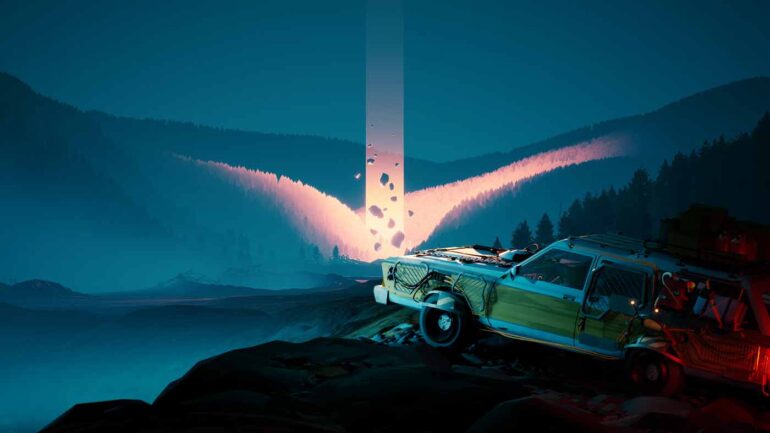Ever since first laying eyes on it and being treated to an early, hands-off demonstration, I’ve been obsessed with the idea of eventually playing Pacific Drive, and now that I’ve finally been able to get behind the wheel myself my obsession has only grown.
For context, Pacific Drive is a project from the folks at Ironwood Studios, a run-based survival game set in the mysterious and surreal Olympic Exclusion Zone in the Pacific Northwest where your primary means of traversal and survival is a beat-up station wagon with mysterious ties to a wilderness full of supernatural mysteries. It’s an unapologetically unique concept, marrying the idea of an exploratory road trip with the twisted sci-fi trappings of nuclear fallout fiction but in practice it’s so much more than that and easily one of the most exciting upcoming games of the moment.
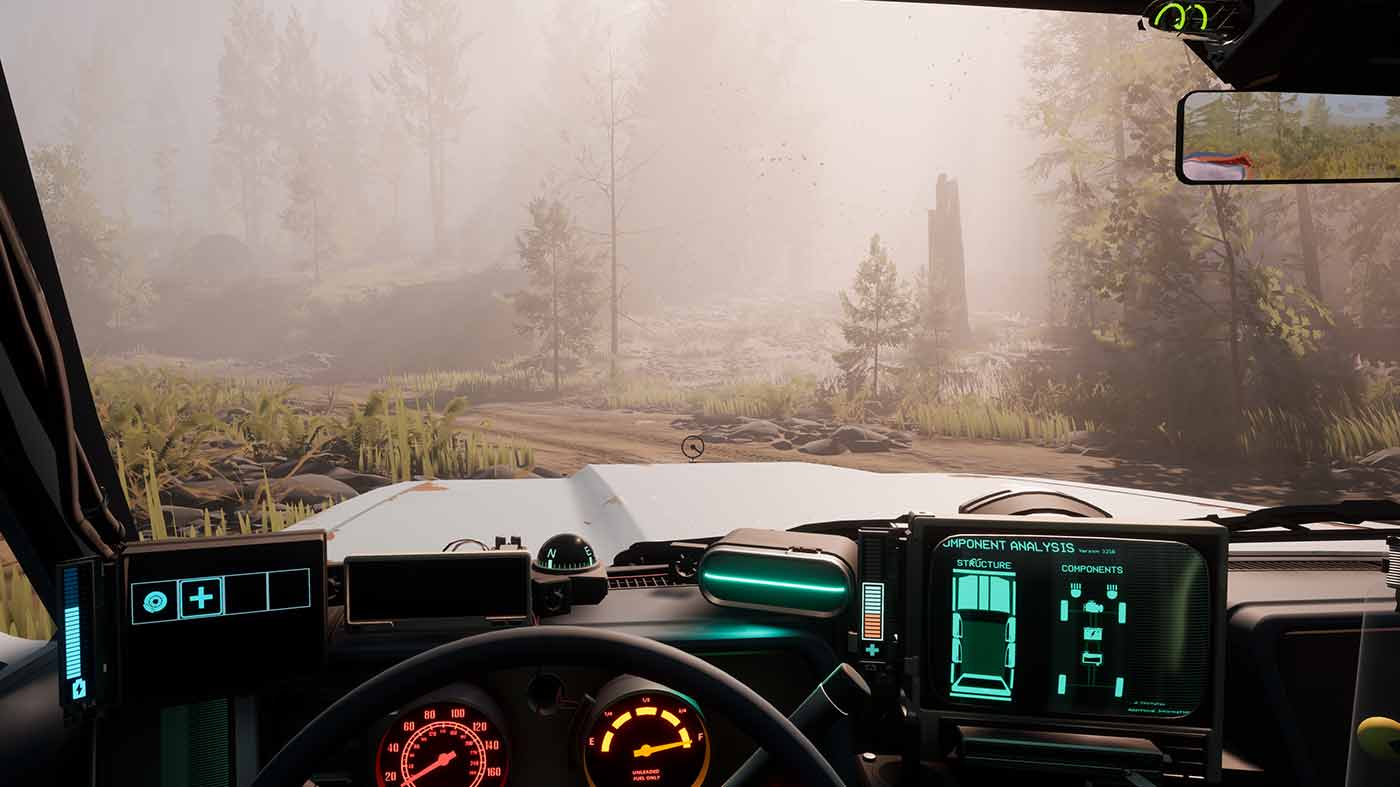
The preview build of the game I was able to play essentially gave me full access to the opening sections from the introduction and some ways into the main story. Pacific Drive opens with your unnamed character on a drive past the mysterious Zone before finding themselves unwillingly pulled into it and their car scrambled into metaphysical spaghetti. Before long, you happen upon a working car in the Zone along with a number of very excited folks on a one-way radio frequency who explain that this is no ordinary automobile – it belongs to a special class of objects in the Zone called “Remnants” and it’s now irreversibly bonded to you.
Aside from being steeped in intrigue from a story perspective, in game terms this means that said car is not just a means of transportation but absolutely your most crucial possession. You could suggest the rather catchy idea that the car is a character all its own, but it’s even more than that. The car is an extension of you, and not just you as an in-game body but you as the flesh-and-blood player. You’ll learn to find comfort in the car, you’ll fear for its safety just as much as your own and genuinely panic when it’s out of sight. At least, that’s what I learned in just a few short hours of playing Pacific Drive.
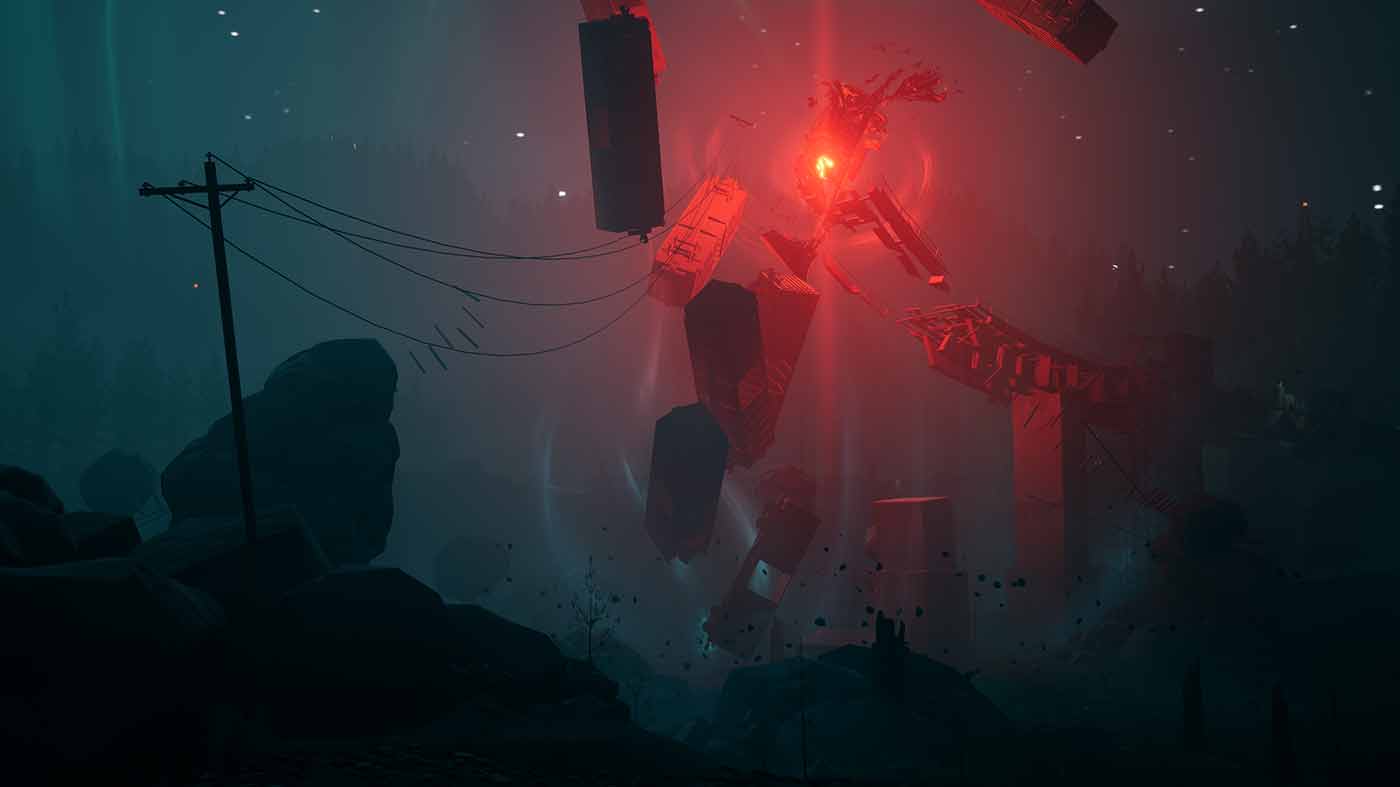
I’m getting ahead of myself though, because there’s a whole game to go around this car. The main goal here is to get yourself out of the Zone, and to do that you’ll need to explore further and further out of the safety of an auto garage that you’ll call your home base. As a run-based game, the core gameplay loop essentially sees you venture out into specific sections of the Zone in short stints to gather resources or intelligence, uncover mysteries or open up new routes to press forward with your objectives.
Each time you set out your success is governed by how much you can accomplish before needing to return and resupply – but it’s not as simple as just heading back the way you came as the Zone won’t allow it. Instead, you’ve got to collect enough charge to teleport yourself, your car and everything you’ve collected back to the garage safely lest you get stranded or worse and lose it all. Even in these early areas while I was out collecting different kinds of materials, researching anomalies or following story threads I felt constantly in danger from things like radiation and deadly obstacles that I would typically only discover when I’d already gotten much too close.
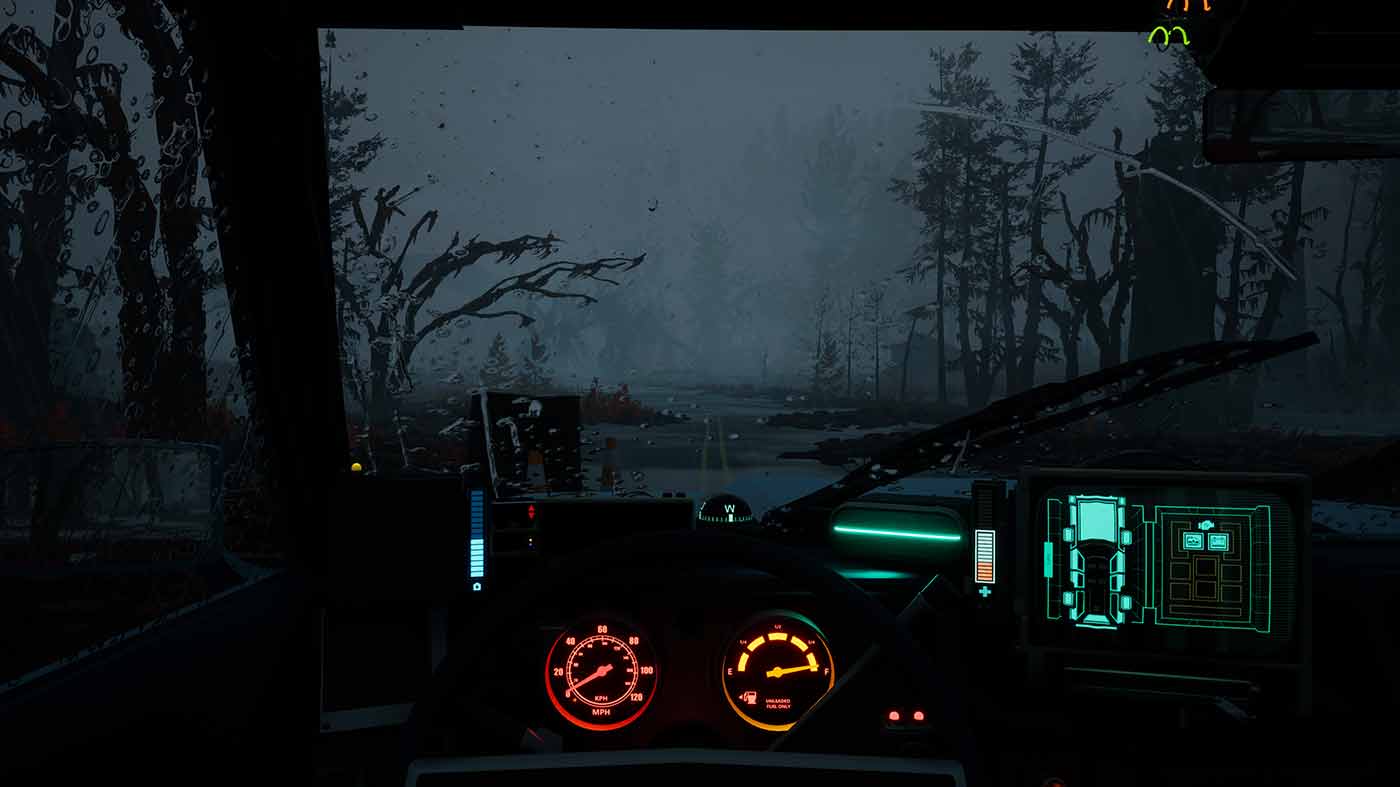
Being out in the Zone naturally feels tense and fraught with impending doom, but it’s also eerily beautiful. Not just thanks to the game’s gorgeous aesthetic and sound design (creepy in-Zone radio station with off-kilter advertisements and music? Yes please!) but also thanks to a palpable sense of discovery. I can’t remember another game that had me muttering “What the fuck is that?” under my breath at quite as steady a clip as this, even if the answer was almost always “Something I never want to see again.”
What you do in the safety of the shop is just as important as how you handle yourself out in the wilds though, with vehicle maintenance and careful planning dictating your survivability and effectiveness in a run. Your car is made up of a number of components from panels and doors to its engine, headlights, boot storage and more and all of them need upkeep whether it’s repairing damage sustained in the Zone or even upgrading and replacing parts that you can craft from unlockable blueprints. Just being outside puts wear on your car, so the more you work on it the longer you can be out and about.
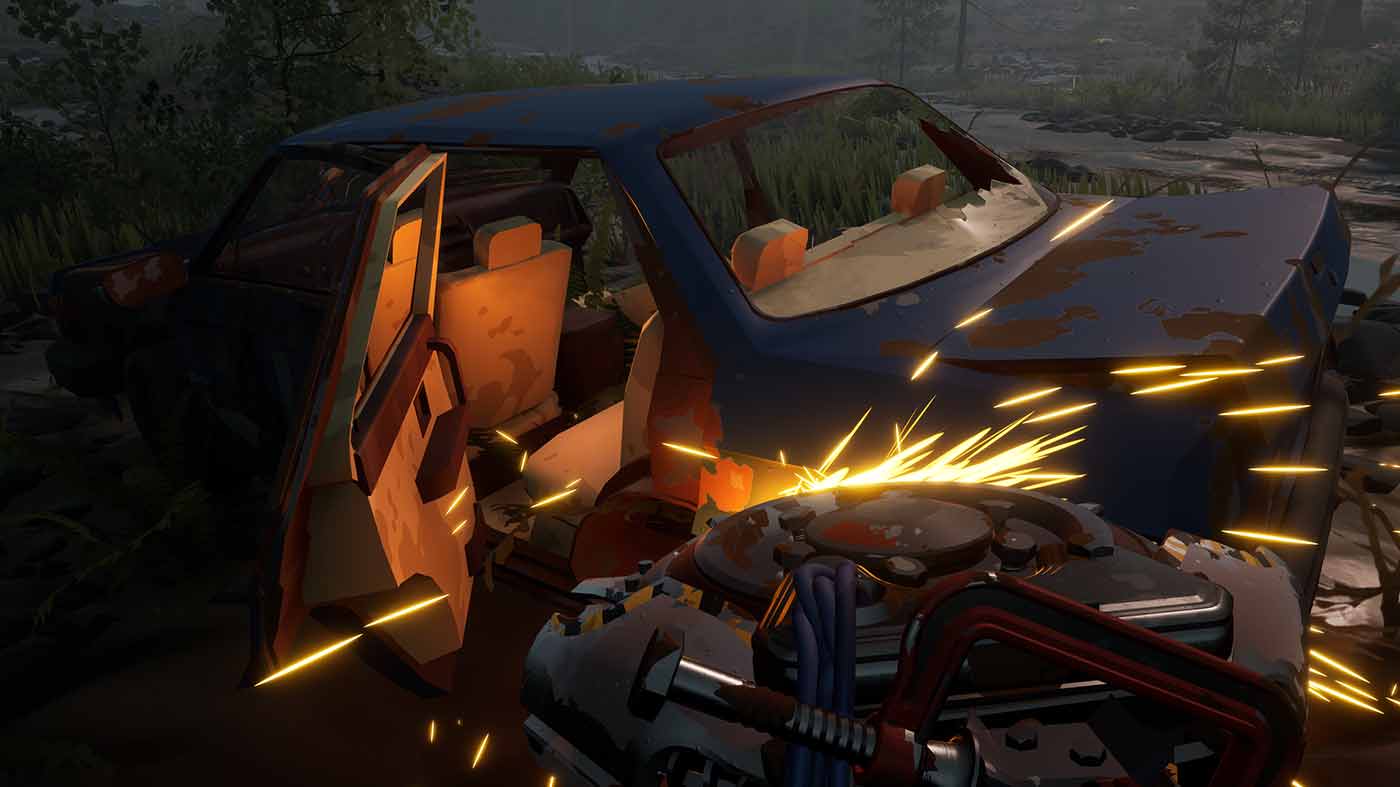
What surprised me the most about Pacific Drive is the sheer number of things you can unlock and add to your car and the garage, with dozens upon dozens of different parts, tools and facilities. You can customise the car with new paints and other bits too, meaning after time you’ll have something that really does feel your own and bears the fruits of your labour. As someone with very little actual working knowledge of cars I was initially worried I’d be totally lost but the game’s more concerned with mechanical depth than, well, mechanical depth. It also does a fantastic job of gradually introducing everything and has a wealth of literature to look through as you come across new concepts.
Importantly, everything you can do or see feels super baked into the world itself with the first-person view giving you a very tangible window into your surroundings. Whether you’re in the garage attaching new bumpers, out scrapping a burned out vehicle for materials or checking out all of the readouts in your very high-tech dashboard there’s always a really great sense of immersion. There are some fun details that really showcase how much care has been put into building the fiction here – I think it’s genius that unlocking blueprints at the garage requires that you have energy to run the blueprint machine and materials to actually print the blueprints onto. Despite being an early preview build I was surprised at how polished everything is as well with tons of nice quality-of-life features.

That said, if any one aspect of the game feels too overwhelming or difficulty, there are heaps of great accessibility and comfort options that allow you to tweak just about everything from how difficult certain mechanics are, how intense the visuals are in different situations and even some pretty sweeping tweaks to completely turn off features like car damage or resource use. I would absolutely recommend getting the full, immersive and tense experience as it was designed but it’s really cool to see that even if you’re intrigued mostly by the story or world and don’t care for the survival stuff you can definitely get something out of Pacific Drive.
There’s so much more I can say about my time with Pacific Drive, and that’s in spite of the fact I intentionally left a bunch of the preview unplayed in order to save some of the mystery for myself when the full game drops, but boy am I ready and raring to go when that day comes. Ironwood Studios has a surefire hit on its hands here, and I would urge anyone with a passing interest in any one thing that this game has to offer to keep it firmly in their sights.
Pacific Drive launches on February 22nd for PS5 and PC. You can wishlist it on Steam here or the PlayStation Store here.


